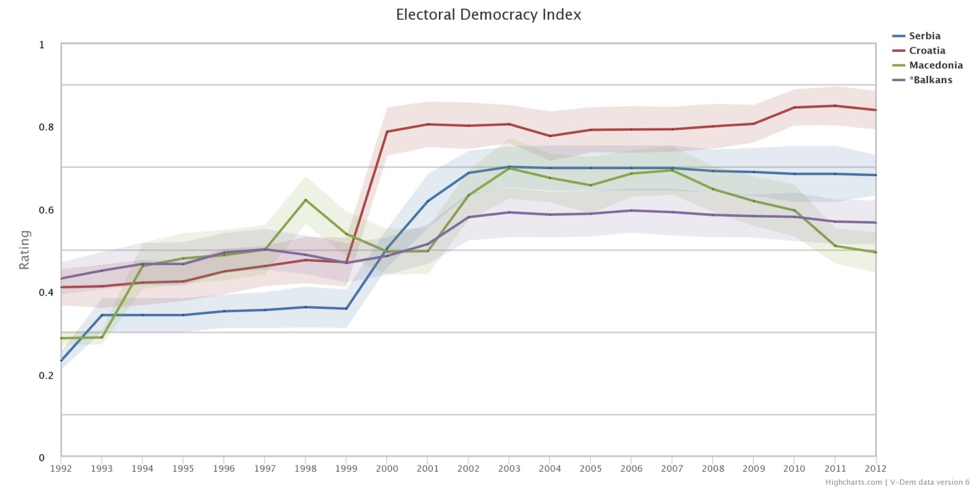Serbia’s Presidential Elections and democracy in the Balkans
By: V-Dem Staff
Apr 13, 2017
According to The Financial Times, Vucic, who served as information minister during the Milosevic era, won on a pro-EU platform with a comfortable margin against his opponents. This week’s graph will take a look at the development of electoral democracy in Serbia since the dissolution of the former Republic of Yugoslavia.
Using V-Dem’s Variable Graph Tool and the Electoral Democracy Index we can compare the development of democracy in Serbia with other countries in the area. The index measures to what extent the ideal of electoral democracy in its fullest sense is achieved, embodying rulers’ responsiveness to citizens achieved through electoral competition. At the time of the dissolution of former Republic of Yugoslavia, Serbia scored rather low on the index but has since taken an impressive increase, stabilizing on a relatively high level. Democratization, on aggregate, spread all over the Balkans. Croatia has achieved the highest level of electoral democracy among the countries while Macedonia appears to have had a more problematic development with a declining score on the index, now below the average of the other countries in the region.
If you want to know more about the Electoral Democracy Index around the world, use our Online Analysis Tool at v-dem.net.


